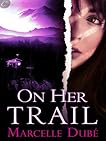My rating: 3 of 5 stars
Robyn Bachar’s Blood, Smoke and Mirrors was favorable reviewed on Smart Bitches, and that’s always a fine thing, so I took it upon myself to check this book out. It was my first from Samhain Press, who certainly did make an impression upon me with the gorgeous cover for this thing. Yeah, sure, it’s yet another Headless Paranormal Romance/Urban Fantasy heroine, but I will at least give this one points for not having a tramp stamp!
Points off, though, for how the girl on this cover is significantly thinner than I think the heroine’s actually supposed to be. That’s one of the things that stood out for me reading through this: i.e., that the heroine frequently describes herself as overweight if not outright fat. So I’m thinking that a bit more realism of cover portrayal might have been nice here, even as I acknowledge that yeah, that probably wouldn’t have sold as well. C’est la vie.
Anyway, the core concept of the book was the other thing that grabbed me: i.e., that our heroine is a witch who’s been banished by her brethren for violation of the Do No Harm rede–in self-defense against a would-be rapist. Naturally, Cat’s pretty bitter about this, and it doesn’t help much either that the one who turned her in was her own lover, Alexander Duquesne. But: Cat’s also in line to become the Titania, the mortal representative to Faerie in her neck of the woods. And cranky as she is at Lex, she’ll have to team up with him to find out who doesn’t want her anywhere near the Titania position.
All well and good. I waffled though about whether I liked the worldbuilding or not; it was certainly clearly laid out and pretty detailed. Some aspects of it were definitely unusual, such as “witches only do this kind of magic and necromancers only do this kind and guardians only do this kind”, not to mention an apparent progression of necromancers eventually becoming vampires. I’ll give due credit for that. I must note though that some of that also made me go “wait, what?”, a bit too much for my liking.
Same deal with Cat and Lex. What kicked this over into paranormal romance land for me, rather than urban fantasy, was three things: 1) their relationship was one of the biggest conflict drivers of the book, 2) there was quite a bit of emphasis about the sexual attraction between them, and 3) the Big Misunderstanding trope showed up. And while paranormal romance land is not a bad place to be in the slightest–witness the number of paranormal romances I’ve read and have on my to read queue–I found myself wishing there was a little less relationship angst and a little more plot.
Cat herself was another thing I waffled about. I liked that she came across a lot as a truly everyday woman, not only because of her weight, but because of her tastes in clothes and food. But at the same time, she was very much in the mold of Smartass Heroine, often to her own detriment, and that’s something I’d really like to see a bit less of in my heroines these days. (Less smartass, more smart.)
Last but not least, I found most of the antagonists a bit too much “evil because that’s their function in this plot” rather than “evil because they have actual motive”. Cat’s father didn’t work for me as a character, and neither did “Lovely Laura Barrenheart”, just because I had a very hard time imagining how any vampire who expected to be taken seriously would actually saddle herself with a name like that. But that said? Zachary Harrison did work, and was deliciously ambiguous.
All in all I liked it well enough, and can definitely see how the parts that didn’t necessarily work for me might work a lot better for others. I think for me this was just a question of taste and style preferences in my reading rather than any real fault of the book. Three stars.







